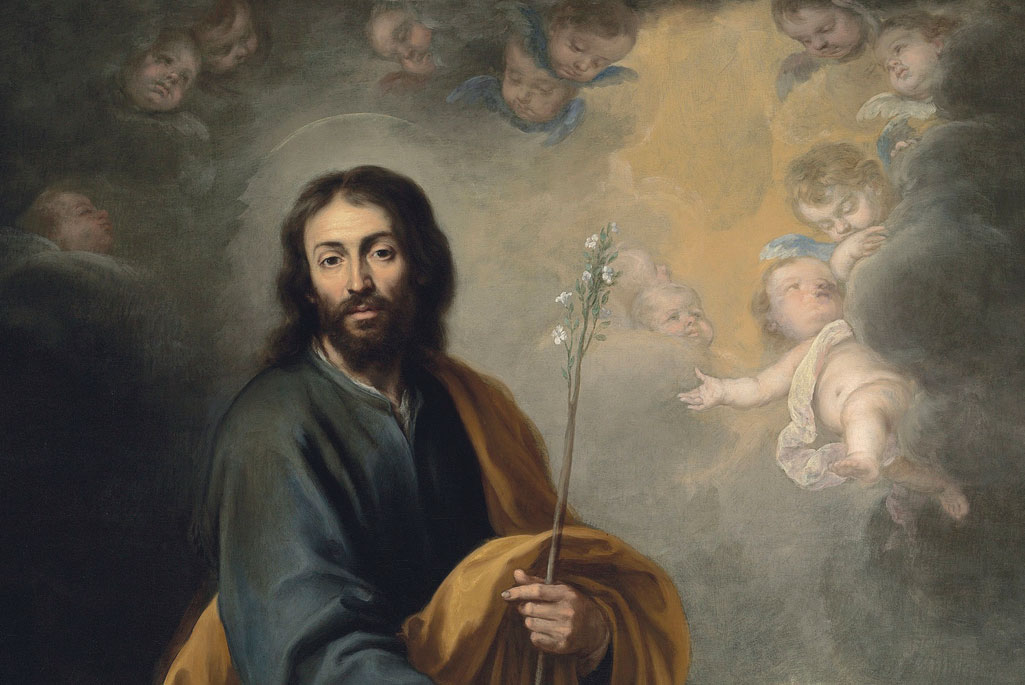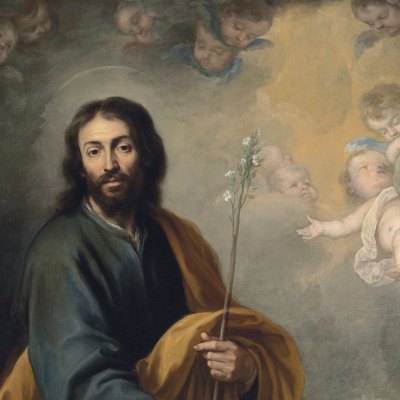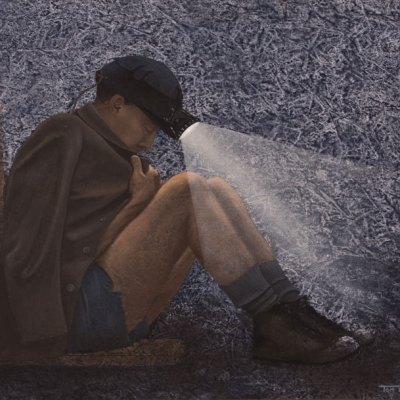In 1843, the passionate 25-year-old art historian Jacob Burckhardt visited the Louvre’s Galerie Espagnole, where he encountered the portrait above. It clearly made an impression, for he went on to write this description of the piece:
Here hangs his portrait (by his own hand). It is the key to all his works…. It is the physical and intellectual power still wielded by this force of nature…. Look at these splendid, slightly pouting lips! Do they not reveal the man of action! These slightly retracted nostrils, these flashing eyes under the splendid, wrathfully arching eyebrows, this whole face, is it not an arsenal of passions? … and, by its sides, the most beautiful jet-black locks flow down. Happy the woman who has been loved by this man!
And to end, perhaps wistfully: ‘His mouth has been kissed a lot, I believe.’
Self-Portrait (c. 1650–55), Bartolomé Esteban Murillo. © The Frick Collection
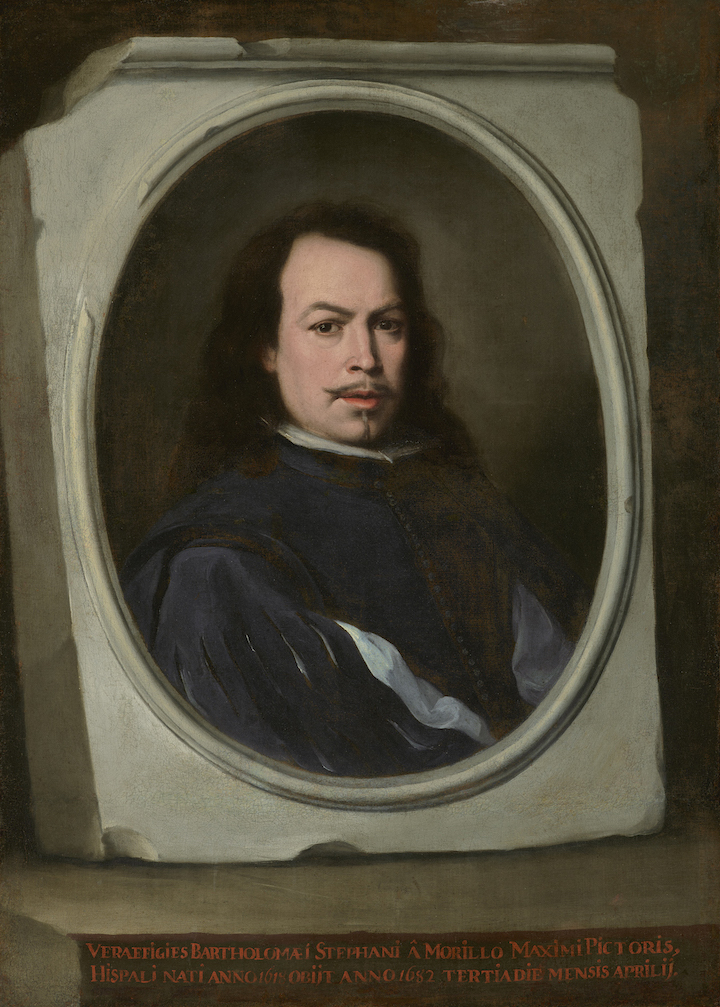
Burckhardt is describing the then hugely popular Sevillian painter Bartolomé Esteban Murillo (1617–82), whose status later took a tumble. Murillo was in his mid 30s when he painted the self-portrait (1650–55), and portrays himself as a confident, high-born, successful and, yes, knowingly attractive man. This juicy quote was found by Xavier Salomon, curator at New York’s Frick Collection. He and Letizia Treves, curator at London’s National Gallery, have rigorously studied the Murillo’s work and consulted with other scholars to create an exquisite exhibition dedicated to the artist’s portraits. It opened recently at the Frick, and is overflowing with new discoveries and thoughts.
The excuse for mounting this research and exhibition project now is two-fold: firstly, this year marks the 400th anniversary of Murillo’s birth; secondly, in 2014 the Frick Collection acquired the Murillo self-portrait described above, which Henry Clay Frick had bought in 1904 but kept in the family mansion outside Boston. It was the first of many Spanish pictures Frick would buy, culminating in his extravagant purchase of Velázquez’s magnificent portrait of Philip IV, a Frick Collection highlight.
There are just 15 known portraits by Murillo. Seven of them are half-length compositions, and Salomon and Treves have secured five of these and displayed them in two intimate galleries alongside related prints.
Juan Arias de Saavedra (1650), Bartolomé Esteban Murillo. Collection Duchess of Cardona
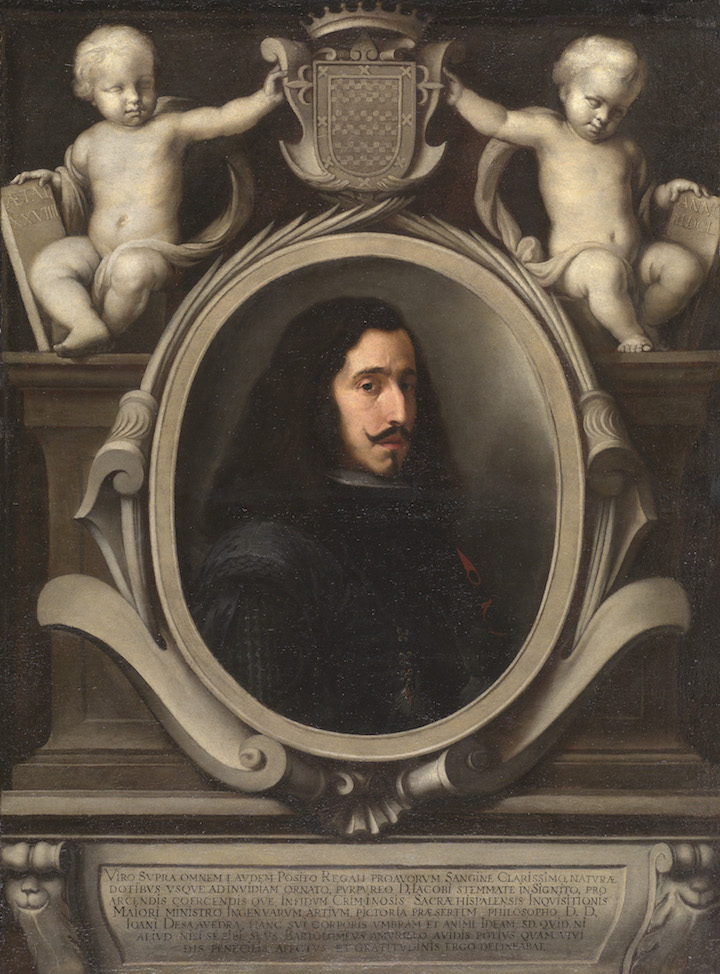
The Frick self-portrait, which was bequeathed to the collection by Emily T. Frick, the widow of Henry Clay Frick’s grandson, dominates one room. Viewers must use their imaginations to enliven the now dismal background colour: Murillo’s intended airy blue sky is gone due to the degradation of the smalt pigment he used. As Salomon explains, Murillo has painted a framing device – ‘a block of chipped and weathered stone to give a trompe l’oeil effect. The whole exhibition looks at how Murillo plays with painting boundaries, surface, with the relation of the viewer and the image.’
Salomon has ‘wracked his brains’ to explain why Murillo used this framing motif, and proposes two reasons. One is the inspiration of Northern European prints circulating in Seville at the time, such as one by Paulus Pontius that hangs nearby, made in 1626 using a Rubens design for an antique setting. The other is the abundant archaeology of Seville and its nearby ruined city of Italica, the second city of the Roman Empire. Seventeenth-century Seville was cosmopolitan, wealthy, and steeped in antiquity and humanist learning; it was even dubbed the ‘New Rome’. Murillo, who was interested in antique coins, felt embedded in the life and history of his city – he never aspired to the Madrid court.
Self-Portrait (c. 1670), Bartolomé Esteban Murillo. © The National Gallery, London
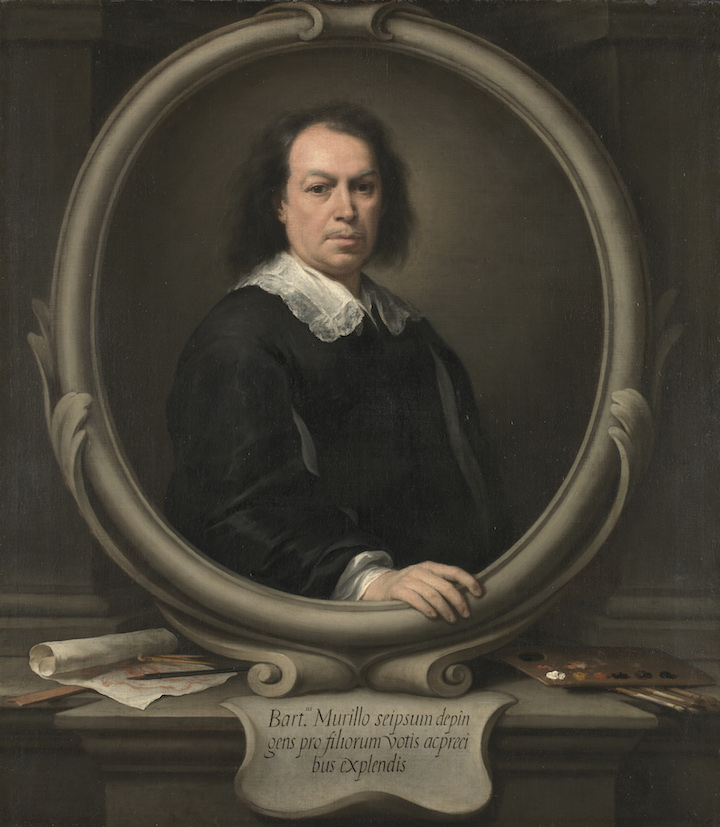
The two other Murillo paintings in this room are both new to the public. A splendid portrait of the dubious Juan Arias de Saavedra (1650), who doubled as a leader of the Inquisition’s horrific persecutions and a sensitive connoisseur of painting, belongs to the Duchess of Cardona. Salomon discovered it ‘filthy, in her Spanish palace’, and now the Prado has cleaned and restored it. The other is a privately-owned portrait of a young noble (1650–55), only recently attributed to Murillo, and again cleaned and restored to reveal the diversity of the artist’s brushwork.
Down the corridor, the second of only two known Murillo self-portraits hangs in the second gallery – this one is on loan from London’s National Gallery. This is the first time the two portraits have been shown together since their dispersal from the Murillo family collection in 1709. Painted around 1670, it reveals an altogether more mature man and a more skilled artist. This is Murillo the widower with four teenage children, responsible, perhaps a little weary. Murillo has reduced his palette almost to monochrome, and redeployed his trompe-l’oeil stone. Here, he has further developed the illusion by painting his left hand so that it appears to be resting on the framing device. The viewer is brought, as intended, face to face with the sitter.
The austere portrait of Nicolás Omazur (1672), which hangs nearby and is on loan from the Prado, pushes this idea further. An Antwerp merchant who was also a poet and collector of paintings, Omazur established himself in congenial and intellectual Seville where he befriended Murillo and bought some 30 of his pictures. In contrast, the fifth and final half-length portrait in the show relates to Murillo’s better-known genre paintings. Here, a peasant boy leans on a sill, his left shoulder seeming to jut out of the pictorial space and into ours. As Salomon says, Murillo portraits play with boundaries.
A Peasant Boy Leaning on a Sill (c. 1675), Bartolomé Esteban Murillo. © The National Gallery, London
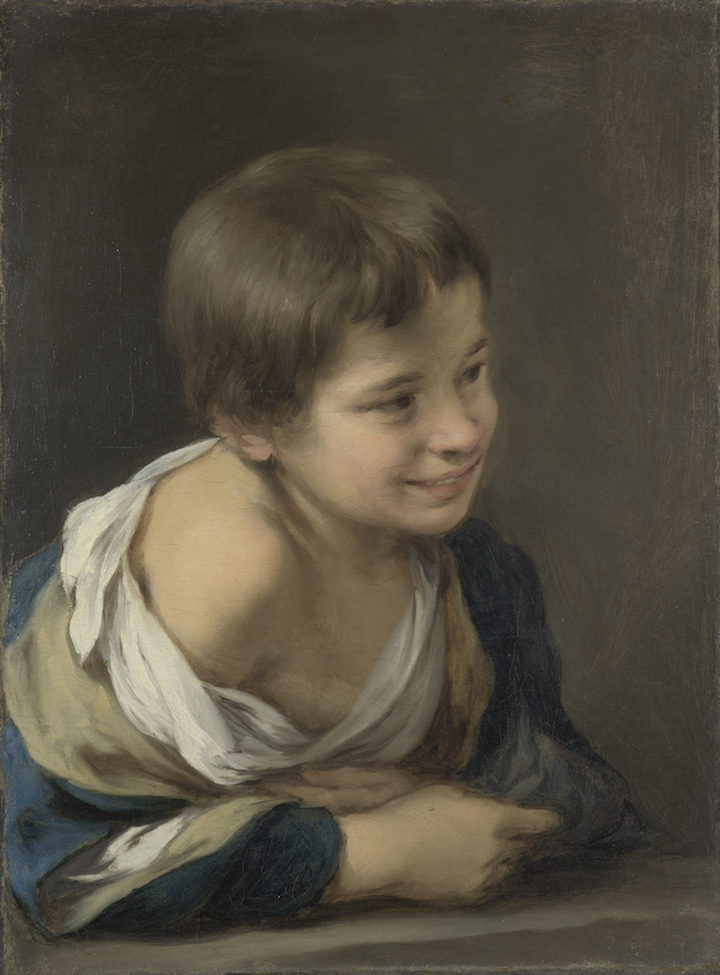
At the beginning of February, for just four days, this show overlaps with the Frick’s next major exhibition. This will display in all their glory the monumental paintings of ‘Jacob and His Twelve Sons’ by Francisco de Zurbarán – another now re-appreciated painter who thrived in 17th-century Seville – which have spent a year being cleaned and studied in the Kimbell Art Museum’s conservation labs at Fort Worth. They are currently on show at the Meadows Museum in Dallas, and this will be their second and final stop before they return home to Auckland Castle in the UK.
‘Murillo: The Self-Portraits’ is at the Frick Collection, New York, until 4 February 2018. It moves to the National Gallery, London, from 28 February–21 May 2018.
